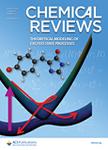版权所有:内蒙古大学图书馆 技术提供:维普资讯• 智图
内蒙古自治区呼和浩特市赛罕区大学西街235号 邮编: 010021

作者机构:Univ Delaware Dept Chem & Biomol Engn Newark DE 19716 USA Janssen R&D Crystallizat Technol Unit Chem Proc R&D B-2340 Beerse Belgium Katholieke Univ Leuven Dept Chem Engn Fac Engn Technol Chem & BioProc Technol & Control B-9000 Ghent Belgium Natl Tech Univ Athens Sch Chem Engn Zografos 15780 Greece Univ Ghent Lab Chem Technol B-9052 Ghent Belgium
出 版 物:《CHEMICAL REVIEWS》 (化学评论)
年 卷 期:2022年第122卷第15期
页 面:13006-13042页
核心收录:
基 金:U.S. Department of Energy, USDOE, (DE-EE0007888-9.5) U.S. Department of Energy, USDOE Janssen Pharmaceuticals, (HBC.2020.2214) Janssen Pharmaceuticals Agentschap Innoveren en Ondernemen, VLAIO
摘 要:ABSTRACT: Artificial intelligence and specifically machine learning applications are nowadays used in a variety of scientific applications and cutting-edge technologies, where they have a transformative impact. Such an assembly of statistical and linear algebra methods making use of large data sets is becoming more and more integrated into chemistry and crystallization research workflows. This review aims to present, for the first time, a holistic overview of machine learning and cheminformatics applications as a novel, powerful means to accelerate the discovery of new crystal structures, predict key properties of organic crystalline materials, simulate, understand, and control the dynamics of complex crystallization process systems, as well as contribute to high throughput automation of chemical process development involving crystalline materials. We critically review the advances in these new, rapidly emerging research areas, raising awareness in issues such as the bridging of machine learning models with first-principles mechanistic models, data set size, structure, and quality, as well as the selection of appropriate descriptors. At the same time, we propose future research at the interface of applied mathematics, chemistry, and crystallography. Overall, this review aims to increase the adoption of such methods and tools by chemists and scientists across industry and academia.